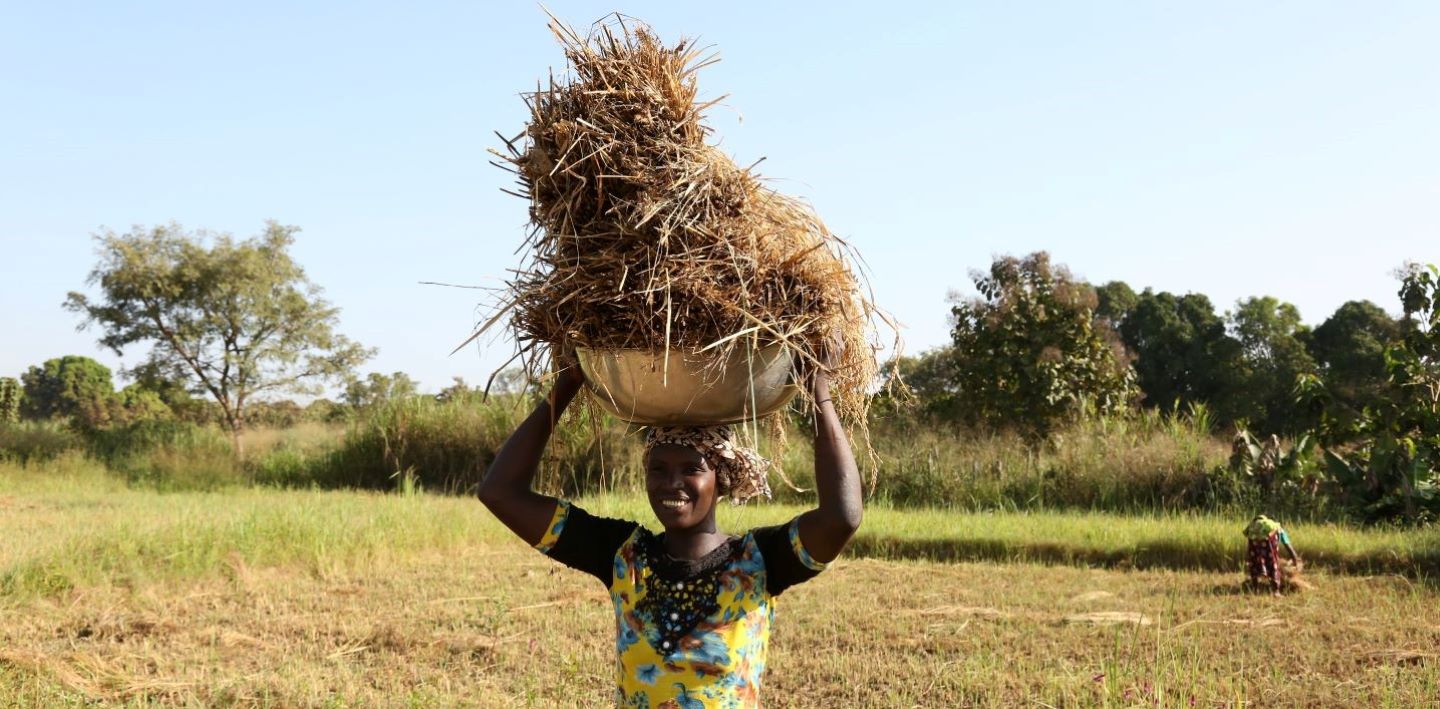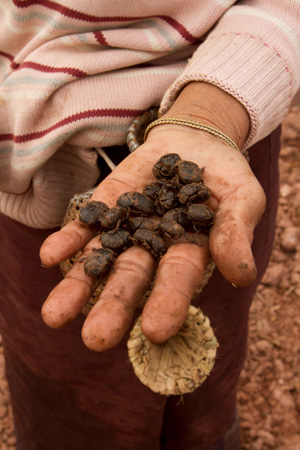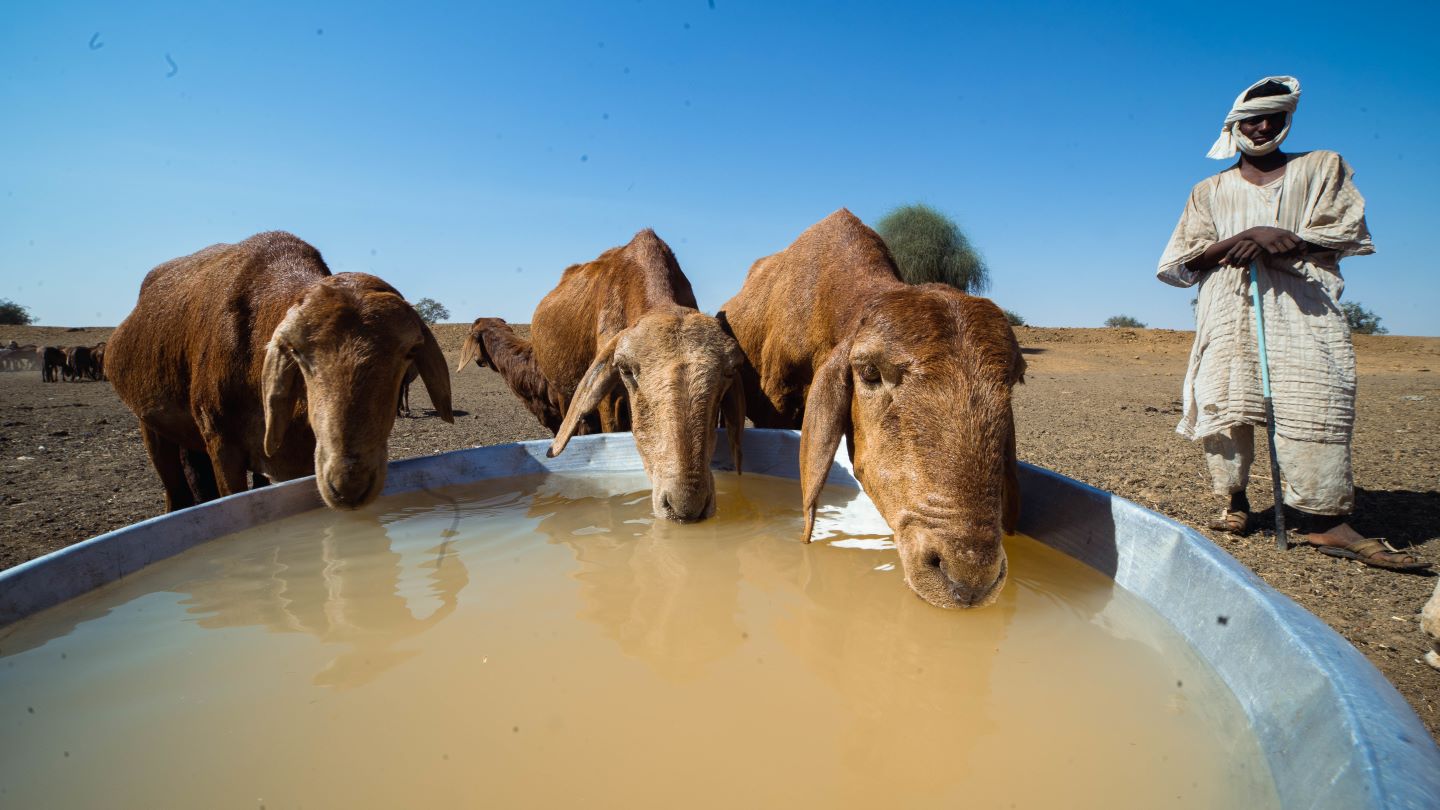What’s on the menu in 2050?
IFAD Asset Request Portlet
Asset Publisher
What’s on the menu in 2050?
Estimated reading time: 4 minutesIt’s a time of rapid global change. Even the food we eat and how we produce it is evolving. For World Food Day, we contemplate what our plates might look like in the future and explore how the world’s small-scale farmers are revolutionizing what we eat.
Tracking food from the field to your plate
Blockchain is not just reserved for cryptocurrencies. As the world’s biggest and safest ledger, farmers will use blockchain to keep reliable records of their crops and contracts.

Consumers will be able to trace produce as it makes its way from the field to the market and on to our plates. With this focus on provenance, farmers who prioritize quality can get better rates for their products.
Seaweed-wrapped snacks
Soon it will be hard to imagine that single-use plastic packaging — which pollutes our oceans and leaches microplastics into our food — was so prevalent.
Instead, we’ll go back to wrapping foods in sustainable and natural materials, like woven baskets and banana leaves, while seaweed will lead the way in a new bioplastics economy. Our packaging will protect the food, then nourish the soil once you’ve enjoyed your snack.

Soup for the soil
Farmers wear many hats — they’re vets, biologists, meteorologists — and in 2050, they’ll also be microbiologists, cooking up microbial soups to feed the soil and make food tastier and more nutritious. These “soups” help good germs and fungi flourish, which makes the soil healthier, while keeping away pests and harmful diseases.
To the universe and to farms
Science fiction becomes reality as technologies developed in space are used to sustainably grow food here on earth. Parasites become pesticides and hydroponics mean plants can flourish year-round.
Using micro-sensors developed by NASA, plants will text farmers when they need water, so each plant gets exactly the right amount, reducing water waste by up to 45 per cent. When it’s hot, the insulation technology used to cool space instruments will be used to prevent fruit from rotting while in transit between farms and markets.
Your grub will include actual grubs
 |
| In Laos dung beetles are dug out of buffalo droppings in a harvested rice field where the livestock also graze. The dung beetles are later eaten. ©IFAD/Harald Franzen |
People have eaten insects for thousands of years and soon they’ll be back on the menu. Insects are a source of protein and, unlike many animals, can be produced in large quantities without greenhouse gas emissions. They’re a great way of making sure that everyone gets a diverse and nutritious diet.
And insects are tasty too! Just try Chef Yoon’s cricket japchae recipe.
Less meat, but better
Right now, people in rich countries eat far more meat than they need for a healthy diet. Not only does large-scale livestock farming account for nearly a fifth of greenhouse gas emissions, but animals are often reared in harsh conditions and diseases can pass to humans.
At the same time, livestock are essential for the nutrition, livelihoods and cultures of many people in developing countries — and they help keep rangeland ecosystems healthy. In fact, there is a better way to consume meat.

In the future, plates across the world will be mostly filled with fruit, vegetables and legumes, while meat will come from animals reared in ways that keep them free of disease. Circular food systems, where animals fertilize the land and use scarce resources efficiently, will be the norm.
Diverse and delicious dinners
Today, half our calories come from just three crops: wheat, maize and rice. With little genetic diversity, these crops are at risk every time a disease breaks out, or climate conditions change.
In the future, thanks to seed guardians who’ve preserved and propagated countless indigenous varieties of seeds, we will eat more varied and nutritionally diverse diets. And instead of vast fields of genetically identical wheat, food will come from small-scale farms which are hotspots of diversity.
How seed guardians in Brazil are increasing biodiversity with help from the past.
Food that nourishes the planet and your body
The world is slowly realising that feeding ourselves cannot come at the expense of the planet. Soon, our food will be grown using techniques that benefit Mother Earth.
Agroforestry means small-scale farmers grow trees, cultivate crops and rear livestock in the same spot. This increases productivity, soil health, biodiversity and resilience against climate shocks, as plants are sheltered from the sun or erosion by floods.
Precision farming means exactly the right amount of water and other inputs, like fertilizer, are used therefore reducing waste. Regenerative farming revives ecosystems for the benefit of people and the natural world alike.
Publication date: 14 October 2022